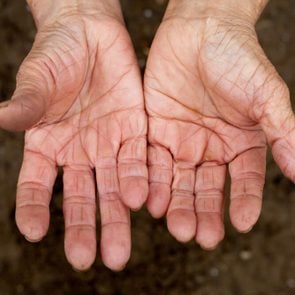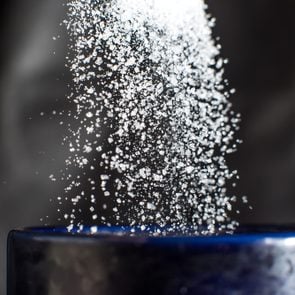Here’s What Happens to Your Skin When You Eat Sugar
Updated: May 12, 2021
Too much sugar can have a negative effect on your skin health and may exacerbate conditions ranging from eczema to acne.
What happens to your body when you eat sugar? Like many things, the answer likely depends on how much sugar you are consuming. Sugar is a source of energy and is found in healthy foods like fruit and dairy (where it’s also packaged with healthy nutrients). However, the more researchers study the sweetener, the more they find just how detrimental excess sugar consumption can be.
In its added form, sugar has been linked to a variety of chronic diseases, including obesity, diabetes, and cardiovascular disease, according to a 2016 study published in the journal Nutrients.
It can be difficult to visualize the effect of too much sugar until it starts to physically affect your health, particularly your skin. To understand the relationship between sugar and skin health, we spoke with dermatologists who reveal the surprising effects of sugar can have on your skin.
Too much sugar may lead to saggy skin
Collagen plays an important role in combating the effects of aging. Collagen is the supportive protein structure for your skin and the underlying cartilage.
Collagen is the most abundant protein in the body, accounting for about 25 to 30 percent of the body’s total protein, according to a 2020 article published in the journal Nutrients. As you age, your collagen production starts to decrease. And the way sugar interacts with collagen can accelerate skin aging.
Patricia Farris, MD, explains that sugar damages the skin through a process called glycation, which involves “crosslinking” collagen and elastin (the protein that acts as elastic connective tissue). The act of crosslinking makes the collagen molecules lose their important, mechanical properties. What you’re left with is what doctors call AGEs (advanced glycation end products), ultimately leaving skin wrinkled.
“Dermatologists call this the ‘sugar sag,'” says Dr. Farris. “Accumulation of AGEs starts in the early thirties and continues throughout life. AGEs in skin give it a yellowish discoloration that is a telltale sign of too much sugar consumption.”
She notes that sun exposure and oxidative stress from the sun put the glycation process into overdrive, so avoiding excess sun is always a good idea.

Sugar can trigger skin inflammation
Inflammation is the body’s response to anything it detects as an irritant, which can present itself in different ways throughout the body.
“Sugar causes cortisol, the body’s stress hormone, to soar,” says Deanne Mraz Robinson, MD, assistant clinical professor of dermatology at Yale New Haven Hospital in Connecticut. “This triggers inflammation, which can spur a variety of inflammation-linked skin conditions to flare up from eczema to rosacea and psoriasis.”
To combat this irritation, Dr. Robinson suggests supplementing your diet with anti-inflammatory foods like ginger, turmeric, green tea, and blueberries. “If you’re eating sugar-filled carbs, pair them with a fat or protein, which will lessen the blood sugar spike and inflammatory reaction,” she advises.
Sugar may exacerbate acne
Inflammation resulting from high sugar consumption also can exacerbate common issues like acne, points out Nada Elbuluk, MD, a dermatologist with Keck School of Medicine of University of Southern California in Los Angeles.
Dr. Elbuluk doesn’t believe there’s a certain amount of sugar that seems to make an impact on your skin. But she does note the recommendations by the American Heart Association. “The AHA recommends that women have no more than 100 calories from sugar per day and men should have no more than 150 calories,” she says. “For women, this means no more than six teaspoons of sugar daily.”
A 2018 study published in the Journal of Pediatrics looked at the correlation between the consumption of sugar-laden soft drinks and acne. Researchers found that the chances of severe-to-moderate acne were significantly higher in adolescents who consumed these beverages daily, versus those who drank no sugary drinks. The acne risks were even higher when the participants had more than 100 grams of sugar each day.
A word about hidden sources of sugar
What foods contain a lot of added sugar? You likely know an ice cream sundae or chocolate chip cookie is loaded with sugar. But what about less obvious food items? Added sugar is commonly found in salad dressings and ketchup. A healthy salad can turn into a sugar-laden meal if topped with a heavy dressing.
“The concerns with the effects of sugar on the skin have been with processed sugar from high glycemic index foods that contain refined and processed sugars and starches,” says Dr. Elbuluk. So, you don’t have to avoid all sugar. Foods with natural sugars, like apples, are OK to eat.
“In general I would say that maintaining a healthy balanced diet, getting sufficient sleep and hydration, minimizing stress, and maintaining a healthy skin regimen all can contribute to having healthy appearing skin,” says Dr. Elbuluk.



